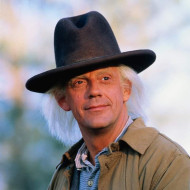Multi-Site
Statamic's multi-site capabilities are designed to manage a single site or site network with multiple localizations, variations, or sections running on one or more domains or subdomains. It can be used to manage translations, country-specific versions of a company site, and other similar use cases. It is not intended to be used for multi-tenant applications.
Overview#
Statamic can be configured to handle multiple "sites". A site is a way of managing a localized version of your content - whether another language, region, or even company/brand (think Proctor & Gamble).
Each site can have different base URLs:
- domains:
hello.comandbonjour.com - subdomains:
example.comandfr.example.com - subdirectories:
example.comandexample.com/fr/
Every Statamic install needs at least one site. Building zero sites is a bad way to build a website and clients will probably challenge any invoices.

Converting existing content to multi-site#
The simplest way to convert existing content to a multi-site friendly structure is to run the automated command:
php please multisite
Read more on converting to a multi-site setup.
Configuration#
Enabling multi-site#
First, enable multisite in your config/statamic/system.php:
'multisite' => true,
Adding new sites#
Next, you can add new sites through the control panel:

Or directly in your resources/sites.yaml file:
default:
name: First Site
url: /
locale: en_US
second:
name: Second Site
url: /second/
locale: en_US
Available options#
Let's look at a full site configuration, and then we'll explore all of its options.
# resources/sites.yaml
en:
name: English
url: /
locale: en_US
lang: en
attributes:
theme: standard
Handle#
Each site is keyed by its handle, which is important for directory structure, as well as referencing sites in collection configs, etc. throughout your site. Changing this is non-trivial, and you should be careful if you already have established content in this site. Read more about renaming sites.
en: # <- This is your site handle
name: English
Name#
Each site has a name, which is a display-friendly representation of your site's name mostly seen within control panel UI. Changing this does not affect content relations.
en:
name: English
You'll notice the default site dynamically references a config variable, but feel free to change this!
default:
name: '{{ config:app:name }}'

URL#
Each site requires a URL to define the root domain Statamic will serve and generate all URLs relative to. The default url is /, which is portable and works fine in most typical sites. Statamic uses a little magic to work out what a full URL is based on the domain the site is running on.
It can be a good idea to change this to a fully qualified, absolute URL. This ensures that server/environment configurations or external quirks don't interfere with that "magic".
en:
# ...
url: '{{ config:app:url }}'
fr:
# ...
url: '{{ config:app:url }}/fr/'
By default, this is linked to your APP_URL environment variable, which allows you to control the exact URL by environment:
# production
APP_URL=https://mysite.com
# development
APP_URL=http://mysite.test

Locale#
Each site has a locale used to format region-specific data (like date strings, number formats, etc). This should correspond to the server's locale. By default, Statamic will fallback to your app's locale.
To see the list of installed locales on your system or server, run the command locale -a.

Language#
Statamic's control panel has been translated into more than a dozen languages. The language translations files live in resources/lang.
You may specify which language translation to be used for each site with the lang setting. If you leave it off, it'll use the short version of the locale. e.g. If the locale is en_US, the lang will be en.
de:
name: Deutsch
locale: de_DE
# Lang not needed, as `de` is implied
de_CH:
name: 'Deutsch (Switzerland)'
locale: de_CH
lang: de_CH # We want the `de_CH` language, not `de`
Note that both Statamic and Laravel don't ship with frontend language translations out of the box. You have to provide your own string files for this. There is a great package called Laravel Lang containing over 75 languages that can help you out with this.
Additional attributes#
You may also include additional arbitrary attributes in your site's config, which can later be accessed with the site variable.
en:
# ...
attributes:
theme: standard
<body class="theme-{{ site:attributes:theme }}">
<body class="theme-{{ $site->attributes['theme'] }}">
Nothing fancy happens here, the values are passed along "as is" to your templates. If you need them to be editable, or store more complex data, you could use Globals.

Text direction#
Text direction is automatically inferred by Statamic, based on the language of your configured site.
For example, most sites will be ltr, but Statamic will automatically use rtl for languages like Arabic or Hebrew.
If you need to reference text direction in your front end, you can make use the site variable:
<html dir="{{ site:direction }}">
<html dir="{{ $site->direction }}">
Renaming sites#
If you rename a site's handle, you'll need to update a few folders and config settings along with it. Replace {old_handle} with the new handle in these locations:
Content folders
content/collections/{old_handle}/content/globals/{old_handle}/content/trees/{old_handle}/
Collection Config YAML Files
# content/collections/{collection}.yaml
sites:
- {old_handle}
- de
- fr
Permissions#
Within the Control Panel, you will not be able to access items in a particular site if you do not have permission.
You may grant permission for any of your sites by adding an access {site_handle} site to the appropriate role.
For example:
permissions:
- edit blog entries
+ - access english site #
+ - access french site #
Per-Site Views#
Views can be organized into site directories.
If a requested view exists in a subdirectory with the same name as your site handle, it will load it instead. This allows you to have site-specific views without any extra configuration.
# resources/sites.yaml
site_one:
# ...
site_two:
# ...
resources/views/
site_one/
home.antlers.html
home.antlers.html
page.antlers.html
For example, given template: home, Statamic will load site_one/home because that view exists in the subdirectory. If you were to have template: page, it would load the one in the root directory because there's no site-specific variant.
Template snippets#
Here are a few common features you'll likely need to template while building a multi-site.
Building a site switcher#
This will loop through your sites and indicate the current site as the active one. Check out all the available variables inside the sites loop.
{{ sites }}
<a class="{{ site:handle === handle ?= 'active' }}" href="{{ url }}">
{{ handle }}
</a>
{{ /sites }}
@foreach ($sites as $switcherSite)
<a @class([
'active' => $switcherSite->handle == $site->handle
])
href="{{ $switcherSite->url }}"
>{{ $switcherSite->handle }}</a>
@endforeach
Declaring the page language#
Indicate the current language of the site by setting the lang attribute on your <html> tag (most likely in your layout view), or the container element around translated content if the page mixes and matches languages.
<html lang="{{ site:short_locale }}">
<html lang="{{ $site->short_locale }}">
Static caching#
If your multi-site should use static caching, you will also need to add additional config parameters and different server rewrite rules. Please refer to the related section of the static caching documentation for the correct settings.
Enabling fields#
By default, your existing fields won't be enabled for multi-site editing. To enable a field to be editable within another site, navigate to the field and click the globe icon (Localizable).
Docs Feedback
Submit improvements, related content, or suggestions through Github.
Betterify this page



